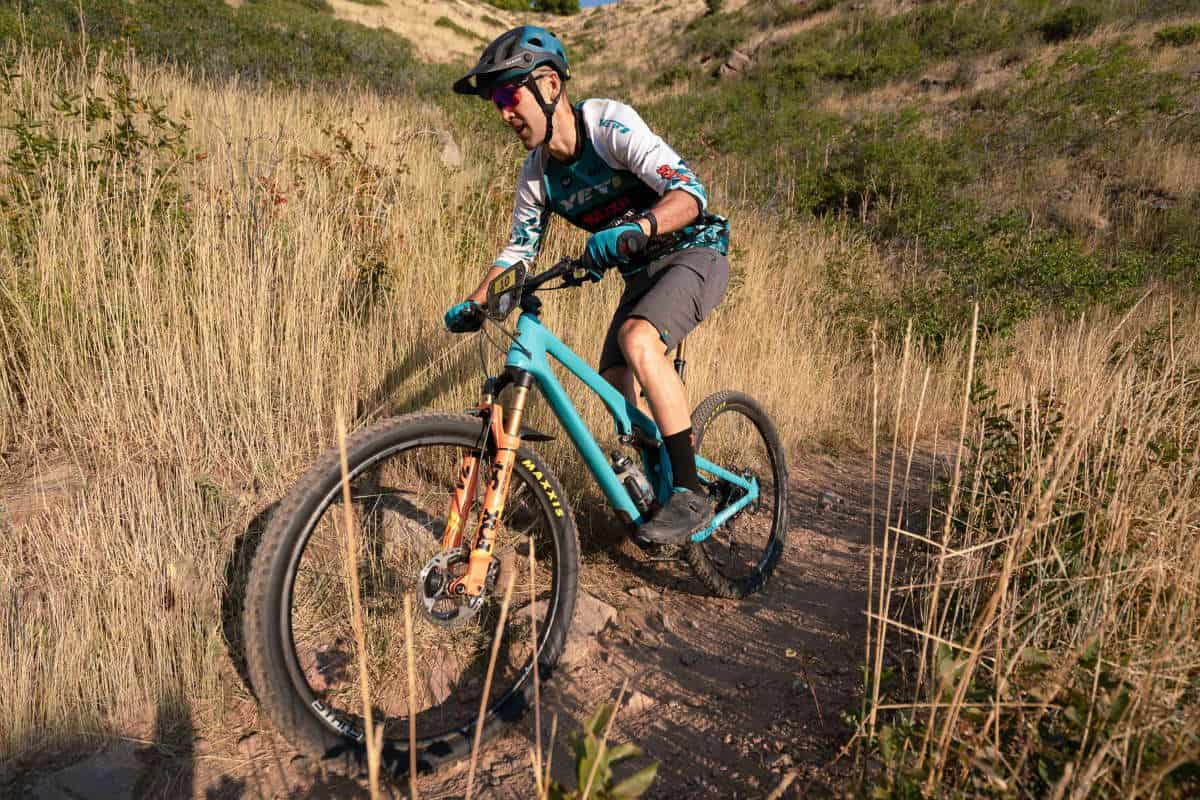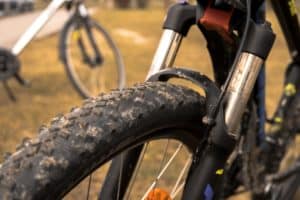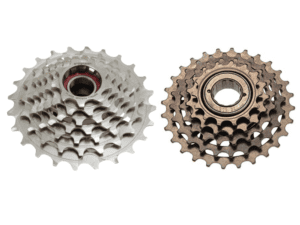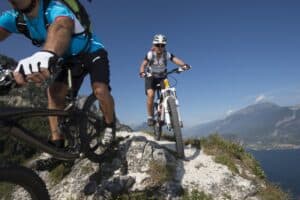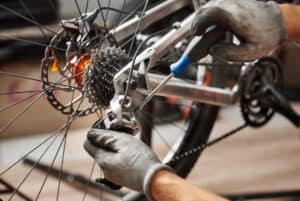In this article, we will review the features of Yeti SB130, explain what makes it more significant than its peers, and help you understand why it’s the ideal mountain bike for your escapades.
Adventure calls!
In-Depth Yeti SB130 Review
Yeti SB130 Specs
- Models: SB130 C1, SB130 C2, SB130 CLR, SB130 T1, SB130 T2, SB130 T3, SB130 TLR, SB130 frameset.
- Front Travel: 150/160mm.
- Rear Travel: 130 mm.
- Frame Size: S, M, L, XL
- Wheel Size: 29″
- Frame Material: Carbon frame
Geometry
The rear travel of the older SB130s was 115mm. The most recent models feature 130mm rear travel, which improved the bike’s geometry. The front also used to be 140mm, but today it’s 150 and 160mm of travel for more comfortable riding on technical terrain.
Therefore, the reach has changed to 33 to 40mm, depending on the frame size. The current Yeti SB130 features a 56.5-degree slack head tube angle which is two degrees slacker than the previous models. The chainstays have also been revised shorter, and the bottom bracket height lowered slightly.
The seat tube angle of the Yeti SB130 was made steeper to boost pedaling efficiency. The rider gets a more comfortable and better-pedaling position than before.
Also, with the front triangle longer, the wheelbase averaging 49mm longer, and the seat tube length increasing with every frame size, you get a convenient bike for climbing and hitting the trails.
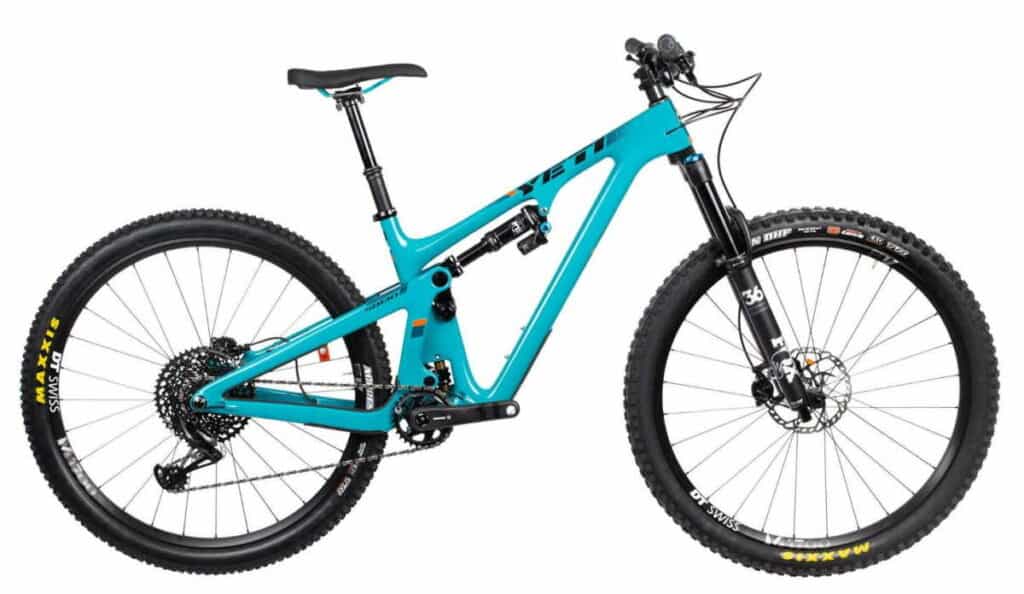
The Fork and Rear Suspension
In the front, you get either a Fox Performance 36 and Fox Factory FIT4 36 for the cheaper models in the series and Fox Factory GRIP2 36 for the most expensive model in the series, the SB130 TLR. The TLR also gets a Fox Factory DPX2 rear shock, while the more affordable versions still get the highly regarded Fox Performance DPX2 rear shocks.
While the bike stars an impressive travel front and rear, the head-turner here is the Switch Infinity system that features a sliding or translating lower link.
The system has remained the same since its inception in 2014, but Yeti’s engineers have made many improvements. The bike’s anti-squat and shock features have received advancements for better performance.
According to Peter Zawistowski, the director of engineering at Yeti, one of the critical updates is tuning the suspension to work better. The latest shock features more linear spring rates. The front triangle now has enough space for a water bottle.

Riding Impressions
Its huge 29er wheels and incredible geometry provide a stable and enjoyable ride. Also, the offset forks and the short stem improve steering. As for pedaling, every stroke is fully utilized to keep the wheels rolling.
The Yeti SB130 is longer and slacker, and the rider is required to shift their weight forward to increase traction for the front tire. By doing so, the rider improved cornering and climbing. You’ll also notice that the bike maintains traction even at high speeds.
While some might think that Yeti Cycles built this bike to perform on the way back down, I like to execute my pedaling power, and the SB130 is just that type of modern trail bike that appreciates every effort. The bike mimics a hardtail with the climb switch, reducing movement when seated and pedaling. One thing I noticed, though, is the DPX2 firm things up but not completely.
Climbing
A bike’s climbing capabilities depend on the rider’s power and skill, and so, other riders with different bikes might make you think the SB130 is not such a good climber. Well, considering all the bikes I’ve ridden, the Yeti gets a higher scorecard because it gives the Santa Cruz Hightower a run for its money up the hill. The SB130’s efficiency and responsiveness to every pedaling are incomparable.
The SB130 is quicker on lighter and shorter climbs and sprints than its peers. Besides, with the proper gear ratio, you’ll need just enough squish to push the MTB in steep climbs. The rear suspension assists the rear wheel to stay on the ground and flat out the bumpy bits to maintain traction and respond to your aggressive riding.
Riding the SB130 is an incredible feeling. While most bikes in this level don’t differ much in comfort, the SB130 is more forgiving on climbs and always ready to roll faster. With such impressive capabilities, the bike only requires legs of steel to push it up.
Weighing less than 28lbs, the SB130 is the lightest full-suspension carbon fiber frame bike I’ve come across. The more lightweight the bike, the easier it’s to ride on technical climbs.
The slack head angle might bring a slight disadvantage here, though. Shifting the riding position towards the front while seated to climb more easily might prove challenging for most riders.
You can’t blame Yeti Cycles for that. The bike is built to offer a better pedaling platform and serve as a descending rocket rather than a climber. I think Yeti SB130 is a great climber if you ask me. But what about descending? Does the bike meet the expectations?
Descending
Here’s where the SB130 outshines every other bike in its category. The suspension performance comes to play when descending. It’s firm and supportive throughout as you drop.
The suspension capabilities of the Yeti SB130 allow it to roll even through rough terrain without bogging down the suspension and offering an incredible bump performance.
The slack head tube, seat tube, and long-wheelbase make the SB130 the real king of descents. The aggressive geometry makes the bike stand out from other trail bikes. The FOX Float was also a wise shock choice as it soaks up the more brutal hits well.
SB130 also feels super responsive to the rider’s input, from pedaling to cornering. The bike goes wherever you want it to go, as long as you use the right tires. The bike’s precise and accurate response is achieved from the combined effort of the suspension design, modern geometry, and impressive travel.
You can never go wrong with the SB130. It’s a versatile bike built for speed and more speed. Sometimes you might feel like you are just not pushing it hard enough. The pace is noticeable when descending and also when riding it on flat. Yeti SB130 is just the answer to your trail needs.
SB130 Better Than the SB150 and the SB100
With every wheel spin, pedal stroke, jump, and cornering, the SB130 means serious business. The geometry was recently revised to give riders a better riding experience and push their limits. The shock extender changes the leverage ratio and has been widely discussed in the mountain biking community.
The SB130 riding feel is way better than its siblings. Not only does it provide better climbing power and capability, but the Yeti SB130 is also easier to manage on more technical and sharper corners.
The brand has marinated its Switch Infinity suspension design in all its models. Another thing that has been common in all the SB130 flagships over the years is the Turq carbon fiber layup and materials that make the bike stand out.
Now let’s get deep into the features of this terrific climber.
FAQs
Is the Yeti SB130 a good bike?
Yeti SB130 is more than a good bike. It’s a great bike that’s worth your money. Its trail-capable features make the bike stand out from the rest. Also, the hind-end components, versatile performance, premium materials, and tough carbon fiber frame make SB130 one of the most exciting bikes to ride.
What kind of bike is Yeti SB130?
Yeti SB130 is widely marketed as a trail bike, but it’s more of a mid-travel trail bike, so it technically remains a trail bike. It excels as a climber but also conquers the trail descents. The Switch Infinity suspension promotes excellent traction and meets the rider’s needs.
What does SB stand for in Yeti bikes?
SB stands for “Super Bike.” If you have a Yeti SB130, you are one of the global owners of a superbike.
How much do Yeti bikes cost?
A bike’s cost depends on the components as well. The SB130 SRAM GX Eagle, also known as the SB130 C1, is the cheapest in the series, going for $5399. The TLR with SRAM X01 Eagle is the most expensive bike at just over $7500.
Wrapping Up
The SB130 is truly a bike that will fit your riding style to love and toast to Yeti for a job well done. I would recommend this mid-travel 29er bike to any rider who wants to grab a bike suitable for various terrain. Depending on your budget, there’s a wide range of SB130s to choose from.
